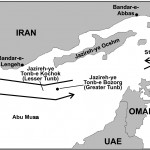At the end of last year, statements were made by the Indian Army Chief, General V.K. Singh about the presence of Chinese Peoples Liberation Army [PLA] troops in the Northern Areas of Pakistan. And in true colonial style, emerged reports that Pakistan might lease the Northern Areas [(NA)- India terms this as Pakistan Occupied Kashmir] to China for 50 years! So if China is planning to stay put in the region, its troops will have to march across the Karakoram Highway.
Chinas interest lies in the geography that links coastal city of Gwadar to the Himalayan Kashgar region on the Chinese border, and the resources and market of 180m people along the route.
To put things in perspective, it is necessary to highlight the areas in which the Chinese already have a foot in the Northern Areas of Pakistan [what India calls Pakistan Occupied Kashmir]. First of all for Beijing, POK is a geo-strategic card, just as Kashmir was to colonial Britain. Bordering as it does the Xinjiang province, China would like to keep a watch on events and in addition, there worry is that since terrorist training camps on the Afghan-Pakistan border and in FATA are sending extremists into their territory, China would like to keep track from a close range of happenings. That is why China now seeks to establish military bases in the FATA, in the Federally Administered Tribal Areas or in Gilgit-Baltistan, a region that borders China.
The next aspect of note is that Beijing is a fair weather friend for Islamabad. And therefore, economic investments in Pakistan and more importantly in NA are contextually important. China’s interest lies in the geography that links coastal city of Gwadar to the Himalayan Kashgar region on the Chinese border, and the resources and market of 180m people along the route. This is precisely why the Karakoram Highway is there. Construction of the Karakoram highway commenced in 1959 and ended in 1979.
The highway is the best example of the partnership between both sides and during Kargil it was reported that Bejing moved some of Pakistan’s nuclear assets via this route to safekeeping in Xinjiang. Senior PLA commanders were also present in GHQ Rawalpindi when the Northern Light Infantry moved into the unoccupied heights of Kargil in 1999.
The highway is the best example of the partnership between both sides and during Kargil it was reported that Bejing moved some of Pakistans nuclear assets via this route to safekeeping in Xinjiang.
Writing in the New York Times, Selig Harrison argues that it takes 16 to 25 days for Chinese oil tankers to reach the Gulf whereas if there is a high speed rail or road link the time taken to transport cargo across the Karakoram highway in 48 hours. The aim would be to get to the Chinese-built Pakistani naval bases at Gwadar, Pasni and Ormara, just east of the Gulf, within 48 hours. The reverse could also work in terms of oil being shipped to mainland China though the costs would quite high. The conclusion is that Beijing wants the NA for economic reasons.
Using the land option to transport cargo and oil across the Khunjareb pass, might never quite match the capacity of the sea lanes, given the topography and the existing carrying capacity of the railroad. According to one analysis on the internet, the costs of “moving oil from Ras al-Tanura to Gwadar and then by rail into the heartland of China would likely cost closer to US$8.00 to US$12.40 per barrel, making that route economically uncompetitive, as well as limited in capacity.”1 This of course would not include the cost of building a rail link between Kashgar and Islamabad. Therefore, this remains a future project but worth watching given the Chinese panache for thinking big!
What China is doing is “˜integrating the NA into its sphere of influence by political and economic support and assistance. In this manner, Pakistan is getting the support it needs for its claim to the region.
Apart from roadways, China has invested heavily in infrastructure, telecom, rail links and tourism. Not only is Beijing investing funds in the upgradation of the Karakoram highway, but it is also planning to build rail links to the NA. It is also working on hydro-electric projects in the area. Chinese telecom company, China Mobile, is a player in PoK and parts of Gilgit-Baltistan and is now planning to maximise its coverage by setting up more cell towers and sites. A joint venture named Pakistan-China Sust Port Company is managing the Sust dry port, some 200 km from Gilgit on Karakoram highway along China border.
What China is doing is ‘integrating’ the NA into its sphere of influence by political and economic support and assistance. In this manner, Pakistan is getting the support it needs for its claim to the region. This assistance also helps Islamabad move ahead on the path of development. The diplomatic consequences of this strategy were made visible to India when Beijing began issuing stapled visas to residents of Jammu and Kashmir and Arunachal Pradesh, which, significantly, are not issued to POK residents. There were no stapled vias for the the “Chief Minister” of Gilgit-Baltistan and the “Prime Minister” of the so-called “Azad Kashmir” when they accompanied President Zardari to Xinjiang in September 2011!
In the aftermath of the 2005 earthquake in POK, the Chinese PLA sent several teams for the purpose of reconstruction and rehabilitation. There are over 14 projects under this scheme with Chinese investments. Chinese construction and telecommunication companies have obtained contracts to expand the Karakoram highway, construct tunnels and mega dams at Diamer Bhasa, Bunji and Skardu. Analysts are forecasting the negative environmental impact of the hydro-electricity plants in the NA and the tunnels being constructed for this and other purposes. Diversionary tunnels built under the mountain walls it is said will lead to erosion and avalanches.




